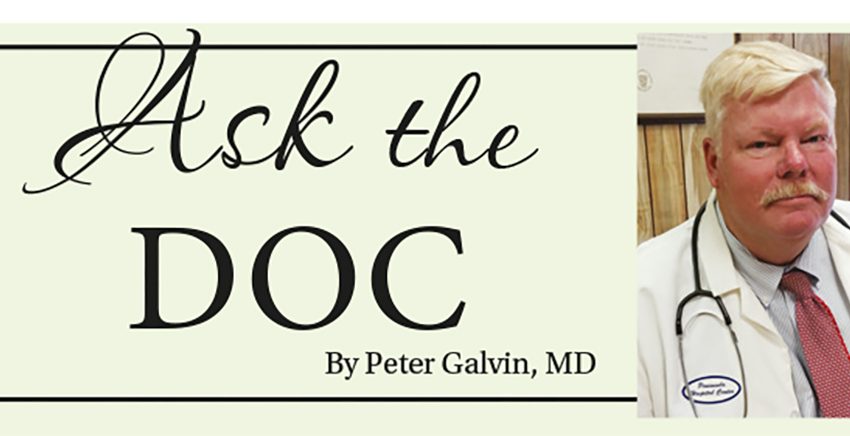Perchance To Sleep

By Peter Galvin, MD
Today’s topic is narcolepsy, but before I get to that, I want to go over some facts regarding normal sleep. As you probably know, dreams occur during the rapid eye movement (REM) phase of normal sleep. REM sleep, which starts at least two hours after falling asleep, is preceded by a period of non-REM (NREM) sleep, during which you do not dream. Once a person falls asleep, brain waves slow considerably during NREM sleep. After several hours, brain activity increases, heralding in REM sleep and dreams. REM sleep is restorative, quality sleep. Most people require several hours of REM sleep, meaning that at least six to seven hours of sleep per night is required. Other sleep phases include the hypnagogic phase, which is the transition from wakefulness and sleep, and the hypnopompic phase, which is the transition from sleep to wakefulness. During the hypnogogic phase, a hypnic (or myoclonic) jerk is not uncommon. This is a sudden contraction of multiple muscles like a spasm, often occurring in response to a sudden sound or noise. Another common sleep occurrence is the Tetris effect. This can occur after a person spends hours before sleeping performing a repetitive activity, especially if it is a new activity (for example, playing a new video game). This activity will dominate the imagery that that person sees, or perceives, while falling asleep.
Narcolepsy causes daytime sleepiness not due to sleep deprivation, poor sleep quality, or sleep apnea. Narcolepsy (type I) is caused by damage to part of the brain (the hypothalamus), resulting in decreased production of orexin, a hormone that helps maintain wakefulness. While the cause of this brain damage is unknown, there is a genetic component (about 10% of cases). Also, it may be caused by an autoimmune response in some genetically susceptible people to an infection by H1N1 influenza. Rarely, it may be seen in those with traumatic brain injuries or brain tumors. It affects 25 to 50 people per 100,000 worldwide and typically starts at age 7 to 25 years, however the diagnosis may not be made until decades later. Narcolepsy causes excessive daytime sleepiness; patients fall asleep frequently and involuntarily while sitting still or during other activities, sometimes in the middle of a conversation. While those with narcolepsy may feel well rested after a brief nap, sleepiness returns after a few hours.
Those with narcolepsy have abnormal REM sleep. REM sleep, rather than occurring hours after falling asleep, occurs immediately after falling asleep, to the point that hallucinations may occur while falling asleep. What also occurs and is terrifying, yet not dangerous, is sleep paralysis, which is brief paralysis while falling asleep, often while also hallucinating. Cataplexy, which is a sudden, brief episode of muscle weakness, can occur in narcolepsy. Cataplexy is triggered by strong and usually positive emotions, such as joking or laughing, causing weakness or paralysis in the muscles of the face, neck, arms, and legs. In severe cases, cataplexy causes patients to collapse and have wakeful paralysis that may last one to two hours. The “Tetrad of Narcolepsy” is cataplexy, sleep paralysis, hypnogogic hallucinations, and excessive daytime sleepiness.
Treatment of narcolepsy involves stimulants like amphetamines to maintain daytime wakefulness. Medications to replace orexin are currently under development. Some famous or historical people have had narcolepsy, including Harriet Tubman, Winston Churchill, Lenny Bruce, and Jimmy Kimmel.


